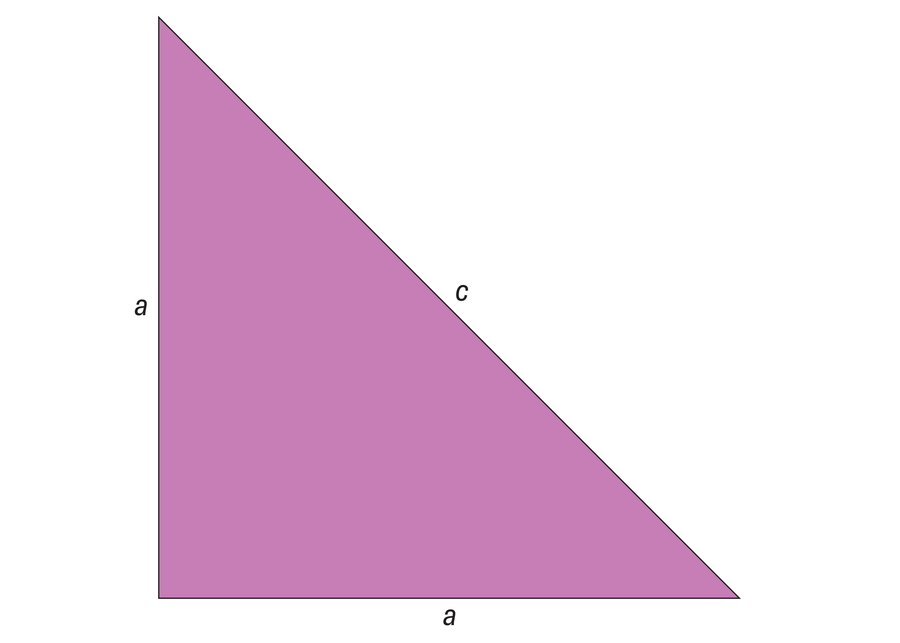How a Secret Society Discovered Irrational Numbers
Myths and legends surround the origins of these numbers
The Pythagoreans were considered a kind of cult – the members were persecuted and killed.
Jakub Krechowicz/Alamy Stock Photo
The ancient scholar Hippasus of Metapontum was punished with death for his discovery of irrational numbers—or at least that’s the legend. What actually happened in the fifth century B.C.E. is far from clear.
Hippasus was a Pythagorean, a member of a sect that dealt with mathematics and number mysticism, among other things. A core element of the Pythagoreans’ teachings related to harmonic numerical relationships, which included fractions of whole numbers.
The whole world, they believed, could be described using rational numbers, including natural numbers and fractions. Yet when Hippasus examined the length ratios of a pentagram—the symbol of the Pythagoreans—the story goes, he realized that some of the lengths of the shape’s sides could not be expressed as fractions. He thus provided the first proof of the existence of irrational numbers.
On supporting science journalism
If you’re enjoying this article, consider supporting our award-winning journalism by subscribing. By purchasing a subscription you are helping to ensure the future of impactful stories about the discoveries and ideas shaping our world today.
From here, the accounts of Hippasus diverge. Some say that the Pythagoreans took offense at this assertion because such numbers went against their worldview. In other tales, Hippasus made his results public and thus violated the sect’s secrecy. Either way, he drowned in the sea after his discovery. Some reports claim that the Pythagoreans threw him off a ship. Others assert that his death was an accident that the Pythagoreans regarded as divine punishment.
Current interpretations of the available historic evidence, however, suggest that these stories are pure legend. Hippasus’ discovery—assuming he even made it—was likely to have been hailed as a mathematical achievement that made the Pythagoreans proud. In fact, many questionable stories swirl around the Pythagoreans who were persecuted for their philosophical and political ideas.
The available facts are limited. The community was probably founded in what is now southern Italy by Pythagoras of Samos—the Greek scholar after whom the famous Pythagorean theorem is named (although it is also unclear whether he proved the theorem). In addition to their interest in mathematics, the Pythagoreans had a number of views that set them apart from others in ancient Greece. They rejected wealth, lived a vegetarian, ascetic lifestyle and believed in reincarnation. Eventually, the group suffered several attacks and, after Pythagoras’ death, the community disappeared completely.
Regarding the tale of Hippasus, the element that historians agree is most likely true is that the Pythagoreans at some point proved the incommensurability of certain quantities, from which the existence of irrational numbers follows.
Numbers beyond Fractions
We now learn in school that some values—the so-called irrational numbers—cannot be expressed as the ratio of two integers. But this realization is far from obvious. After all, irrational values can at least be approximated by fractions—although that is sometimes difficult.
The famed proof of irrational numbers presented by Hippasus—or another Pythagorean—is most easily illustrated with an isosceles right triangle: consider a triangle with two sides, each of length a, that form a right angle opposite a hypotenuse of length c.

The existence of irrational numbers is best explained with an isosceles right triangle—that is, a triangle with two sides of an equal length that form a right angle.
Manon Bischoff/Spektrum der Wissenschaft
Such a triangle has a fixed aspect ratio a⁄c. If both a and c are rational numbers, the lengths of the sides of the triangle can be chosen so that a and c each correspond to the smallest possible natural number (that is, they have no common divisor). For example, if the aspect ratio were 2/3 , you would choose a = 2 and c = 3. Assuming that the lengths of the triangle correspond to rational numbers, a and c are integers and have no common divisor—or so everyone thought.
Proof by Contradiction
Hippasus used this line of thinking to create a contradiction, which in turn proved that the original assumption must be wrong. First, he used the Pythagorean theorem (good old a2 + b2 = c2) to express the length of the hypotenuse c as a function of the two equal sides a. Or, to put that mathematically: 2a2 = c2. Because a and c are integers, it follows from the previous equation that c2 must be an even number. Accordingly, c is also divisible by 2: c = 2n, where n is a natural number.
Substituting c = 2n into the original equation gives: 2a2 = (2n)2 = 4n2. The 2 can be reduced on both sides, giving the following result: a2 = 2n2. Because a is also an integer, it follows that a is squared and therefore is an even number. This conclusion contradicts the original assumption, however, because if a and c are both even, neither of them can be a divisor.
This contradiction allowed Hippasus to conclude that the aspect ratio of an isosceles right triangle a⁄c cannot correspond to a rational number. In other words, there are numbers that cannot be represented as the ratio of two integer values. For example, if the right angle forming sides a = 1, then the hypotenuse c = √2. And as we know today, √2 is an irrational number with decimal places that continue indefinitely without ever repeating.
From our current perspective, the existence of irrational values does not seem too surprising because we are confronted with this fact at a young age. But we can only imagine what this realization might have prompted some 2,500 years ago. It could have turned the mathematical worldview upside down. So it’s no wonder that there are so many myths and legends about its discovery.
This article originally appeared in Spektrum der Wissenschaft and was reproduced with permission.















